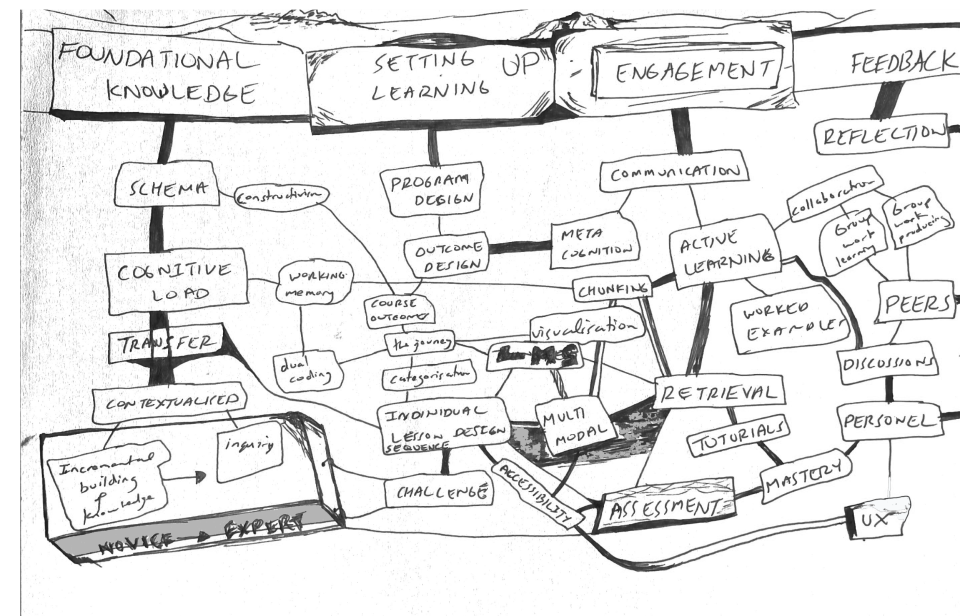Over time and experience, you have developed an extensive multilayered library of knowledge – or schema – related to your area of expertise. It is what makes you an expert in the field and differentiates you from the students before you.
Facilitating an opportunity for those students to begin the journey towards acquiring a similarly developed schema is what drives the best educators, and it drives them because they want the next generation to carry the baton and advance the field further.
In designing a curriculum, a highly effective strategy is to reverse your schema, and identify all the building blocks that make it up and the order they go in. Articulating this hierarchical journey towards expertise is extremely powerful because it allows you to judge where your students might sit in relation to it. Your course is then pitched there as a starting point.
Designing outcomes
The outcomes of the course will be the key skills and knowledge that constitute the next stage of the developing schema within the given amount of time. Part of the skill of the educator is being able to define these capabilities and knowledge precisely, and the components that go towards making each outcome whole, while always considering how they are all connected.
- Read our guide to what good assessment looks like online
- Find out how to build effective rubrics in just five steps
- Collected insight on putting feedback at the heart of assessment
Visualising the curriculum is a great way to do this, for instance by creating a mind map of the schema, like this one.

A detailed map of schema development also allows for the skills and knowledge to be categorised. Often, sequences of learning will be based around themes or main ideas, and these can be categorised as course learning outcomes.
A common course learning outcome is to be able to apply knowledge of a topic. But, of course, there is likely to be much more than a single piece of knowledge in the make-up of a whole course, and so it is necessary to have sub outcomes inside the main outcome.
Experts tend to assume that students know more than they do. This hindsight bias tends to result in learning sequences that omit key ideas or information needed for a novice learner to piece new concepts together and make new connections to build their schema. Awareness of this “curse of knowledge” demands that the articulated schema, and knowledge journey towards acquiring it, is a detailed one.
Aligning outcomes to assessment
Identifying the key skills and knowledge allows you to align formative assessment to ensure the content is understood. This greatly assists the student in being able to construct the next stage of their own schema more efficiently as they become increasingly aware of what precise knowledge they are struggling with. If you have provided adequate resources, your students will be able to gain understanding in areas they find difficult.
Using outcomes to shape assessment rubrics
When rubrics are added to assessment, these outcomes can be assigned to them.
The teacher grades the assessment using the marking rubric.
The technology automatically feeds the selected scores into the grade book.
The student can visually see in which areas they were successful or unsuccessful.
When the assessment is graded, if the technology permits, the rubric results can be seen by the student, giving them a view that aggregates their results over the whole course.
This provides students with more precise feedback on their strengths and weaknesses, demonstrated by the results. It allows them to self-regulate their learning, deciding where to focus effort. This clear direction of what students need to work on in order to close the learning gaps increases their motivation, as opposed to feedback that provides a vague sense of what the issues may be.
What’s in it for you?
Constructing precise outcomes and aligning them to assessment and sequences of learning doesn’t just create a more efficient learning culture; it also makes your job as a teacher more enjoyable as the improved feedback, and thus opportunity for students to address learning gaps, will result in faster schema development and inevitably less interruption to the flow of your course. We all know that is a more enjoyable teaching experience.
Paul Moss is a learning designer at the University of Adelaide.




comment